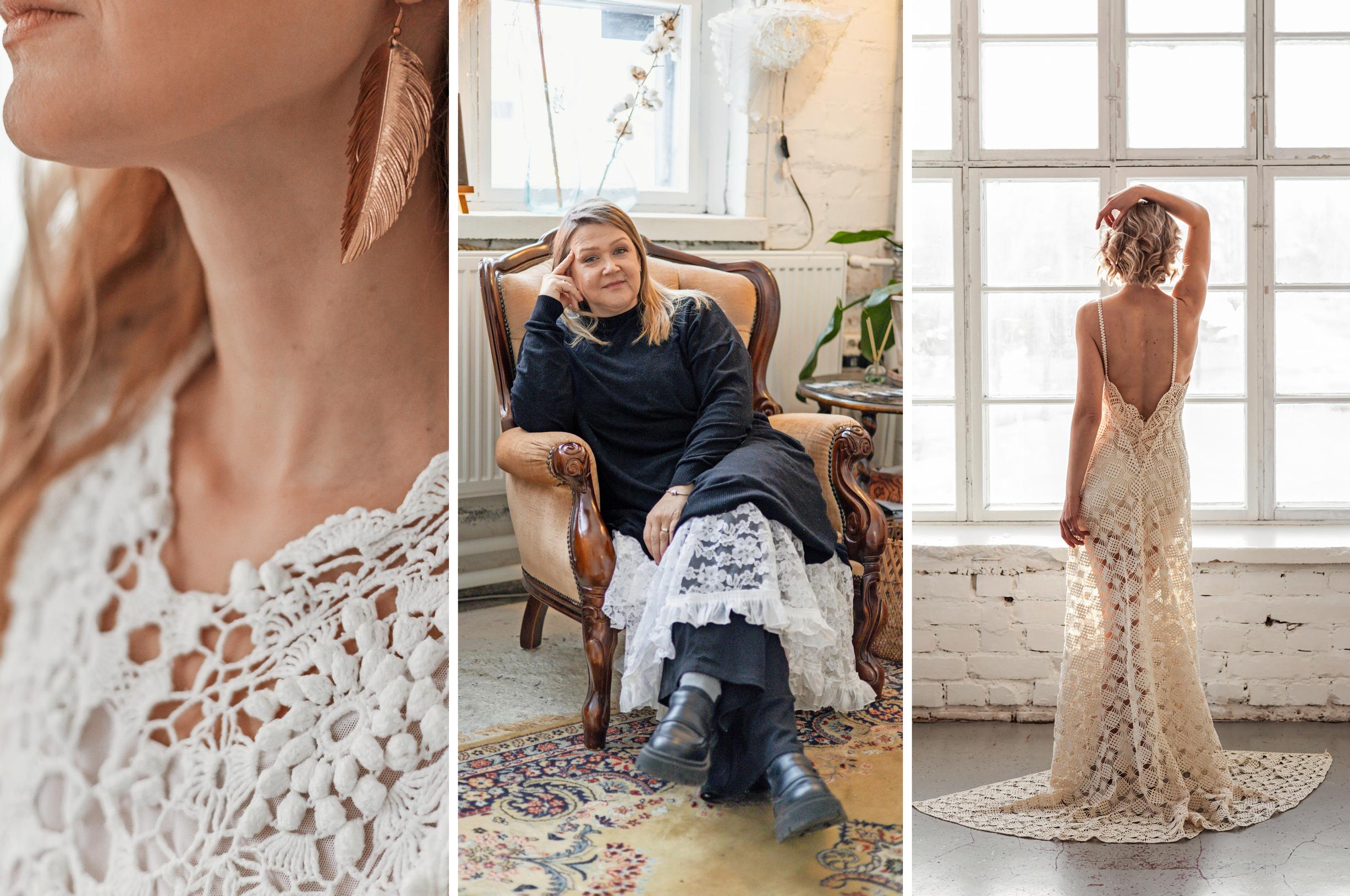
Mari transforms lace curtains and bedspreads into wedding gowns—“My friends call me the lace whisperer”
Third-generation seamstress Mari Ketosalmi used to make practical everyday outfits, but a single try at lace ended up captivating her. Check out Mari’s tips for sewing upcycled lace, too.
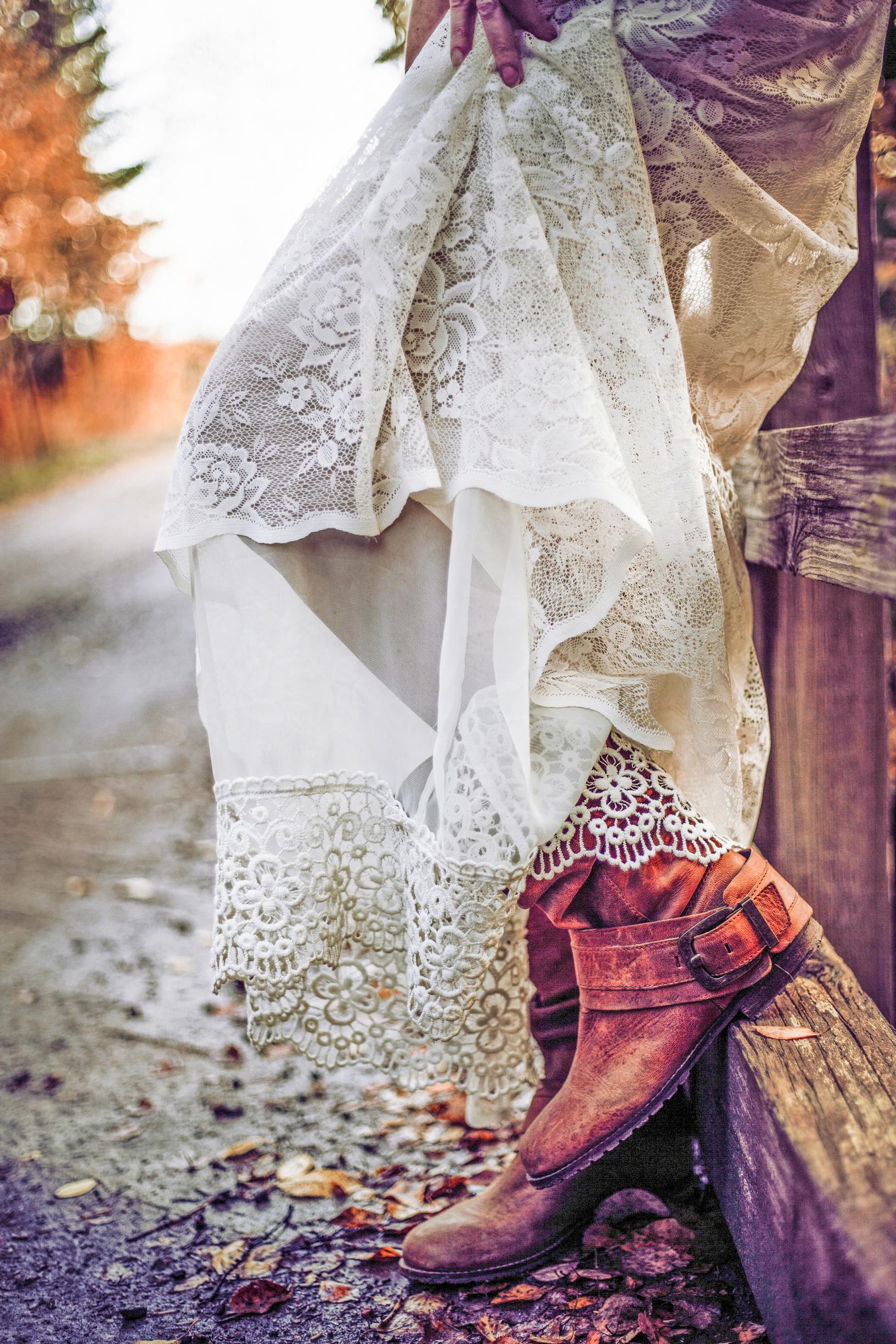
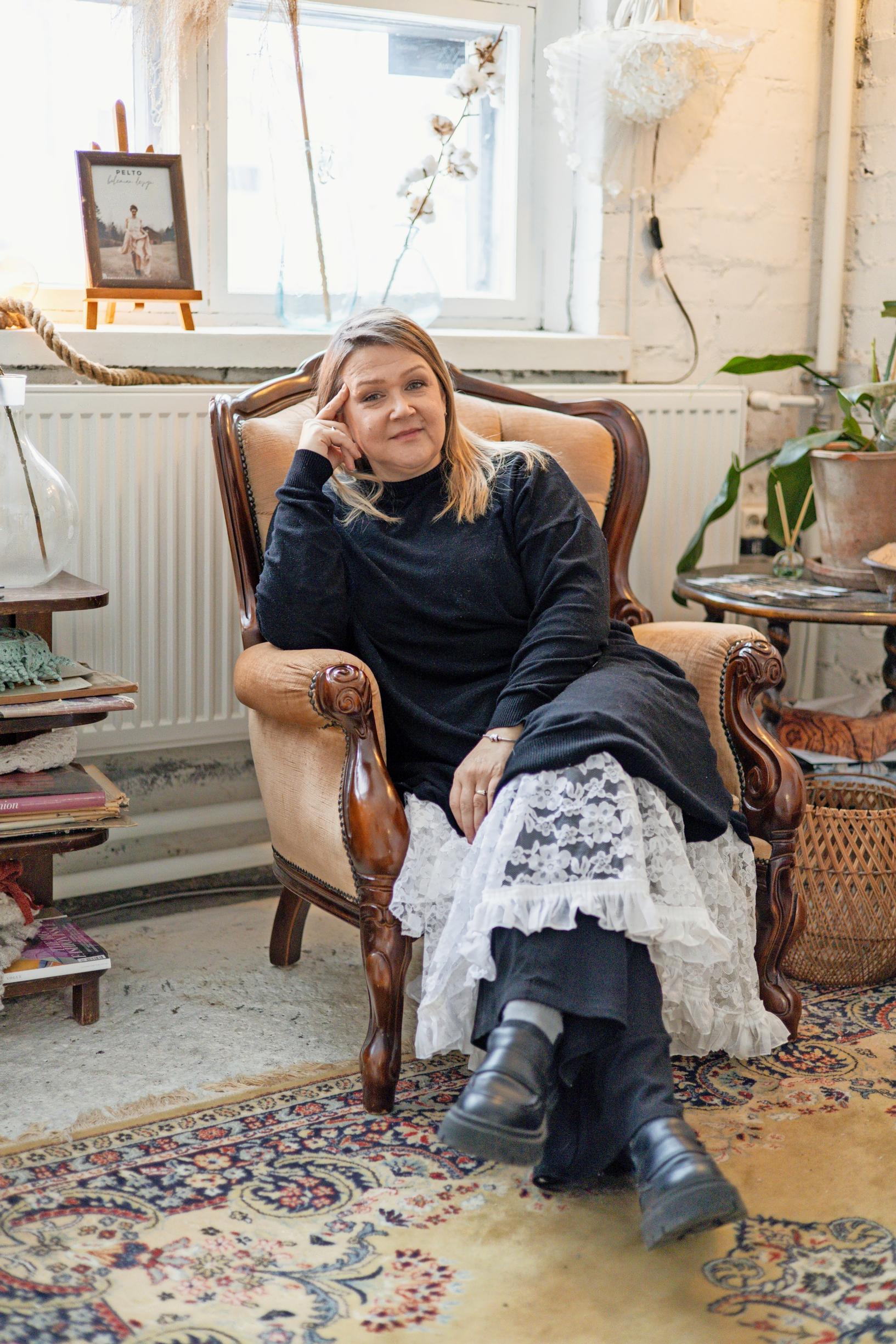
Previously Mari Ketosalmi loved color and patterns above all else as a seamstress. These days, however, she finds the lightness of lace and wedding gowns calming. She hasn’t used sewing patterns for years; instead, she marks measurements directly on the fabric.
The lace gowns take shape in Mari’s atelier at the old bus factory in Lahti, Finland the atmosphere of which she describes as “cotton candy clouds.” When Mari founded her Peltodresses business five years ago, her dream was to see one of her designs at the annual Independence Day Reception at the Presidential Palace. Now, the dream has come true six times.
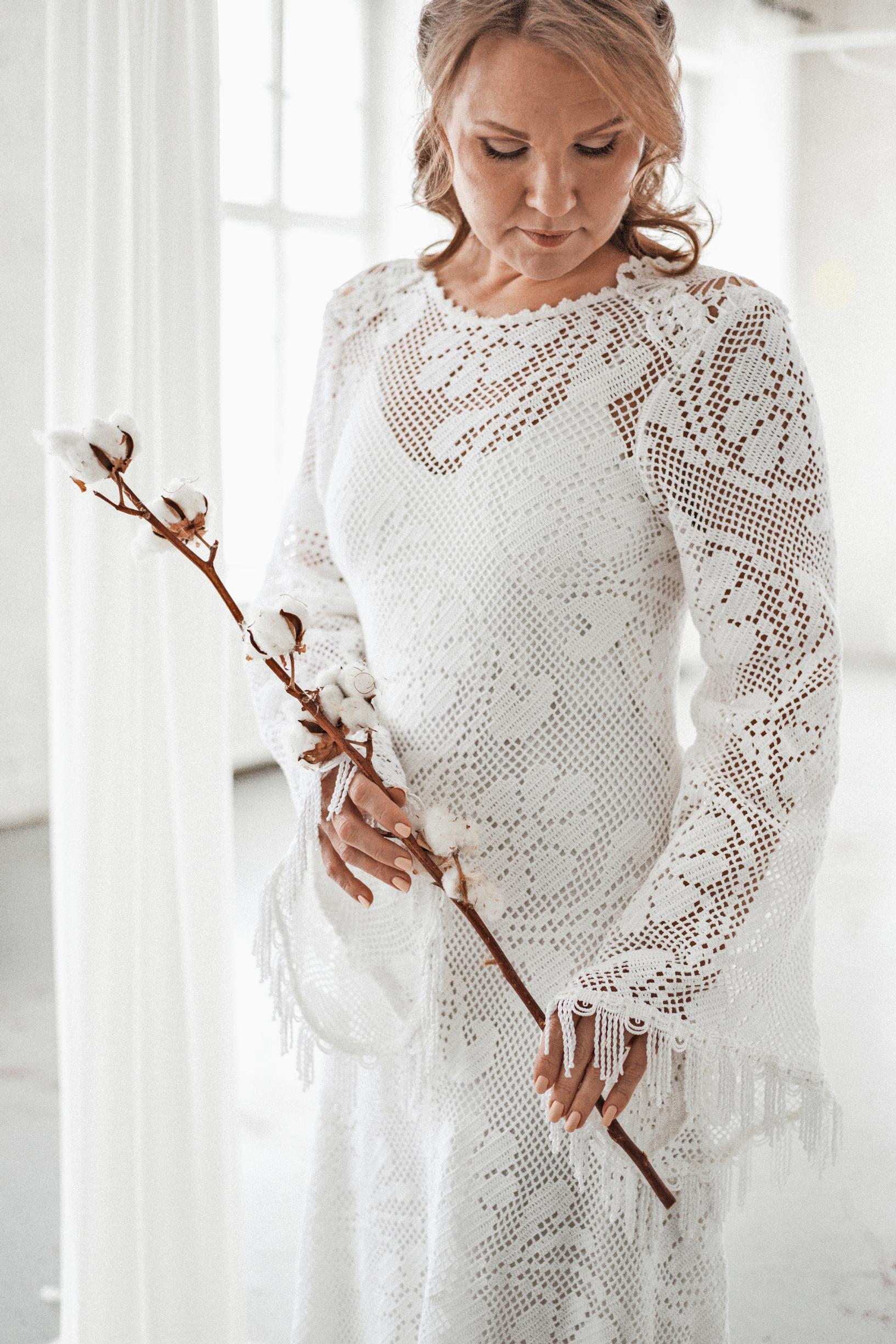
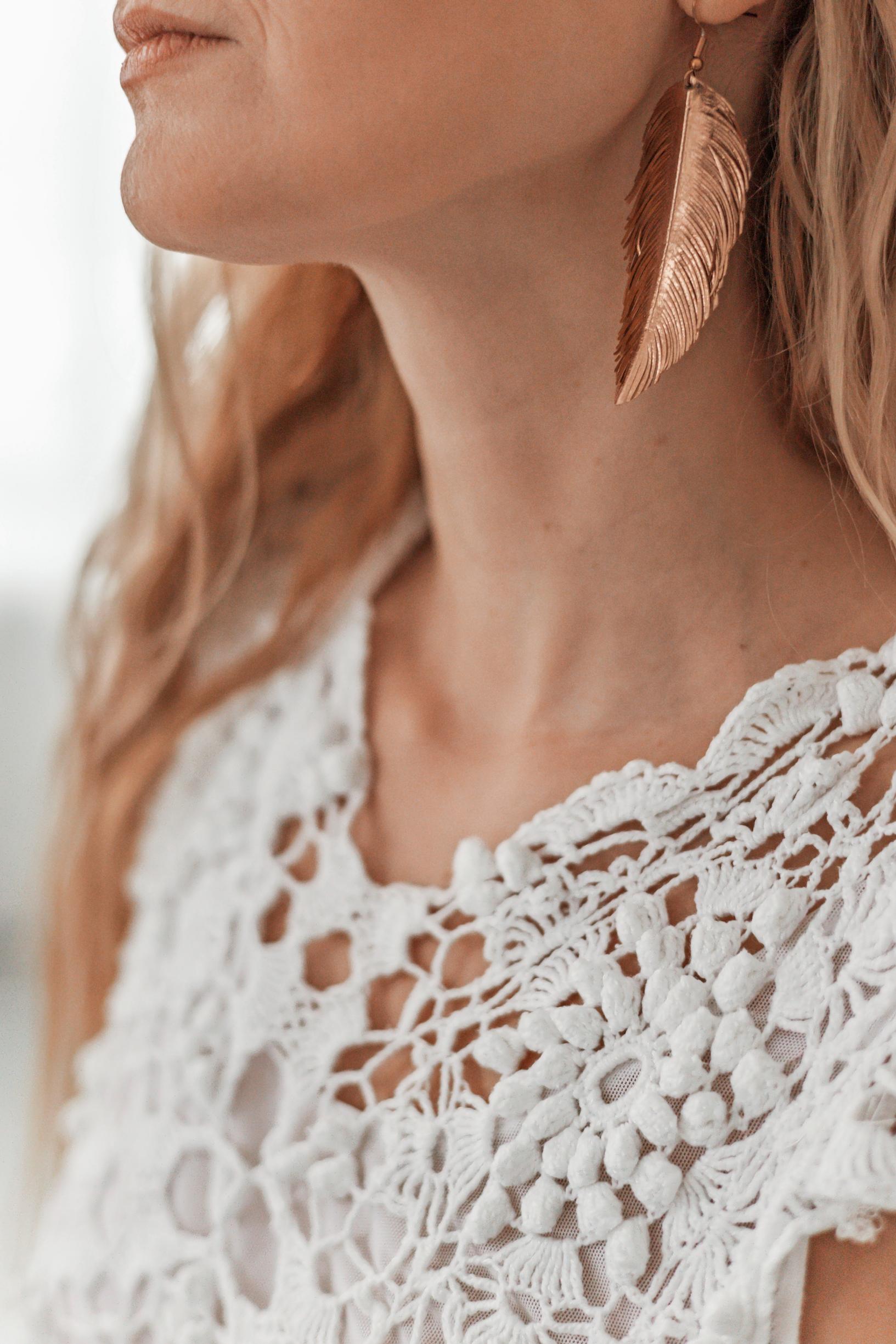
“I’m making 60 gowns for next summer, including one that’s headed all the way to Texas.”
Mari, how did you come up with the idea to make dresses from upcycled lace?
Five years ago, my friend and photographer Heli Mielonen asked if I wanted to create lace dresses for one of her photoshoots. She knew a bohemian, lacy style wasn’t really my thing, because at my custom tailoring and repair shop, I mostly worked on practical everyday clothes. I’d also never crocheted anything bigger than a potholder, and I definitely hadn't made bobbin lace.
Still, I’m adventurous, so I accepted the challenge. Once I started making lace gowns, something lit up in me. It wasn’t just a one-off experiment—the lace totally swept me away. Now, I mainly create Peltodresses for clients around the world. I’m making 60 gowns for next summer, including one that's headed all the way to Texas.
Interestingly, I’ve discovered a side of myself that loves delicate things. I now wear lighter colors and dresses with flowing hemlines myself.

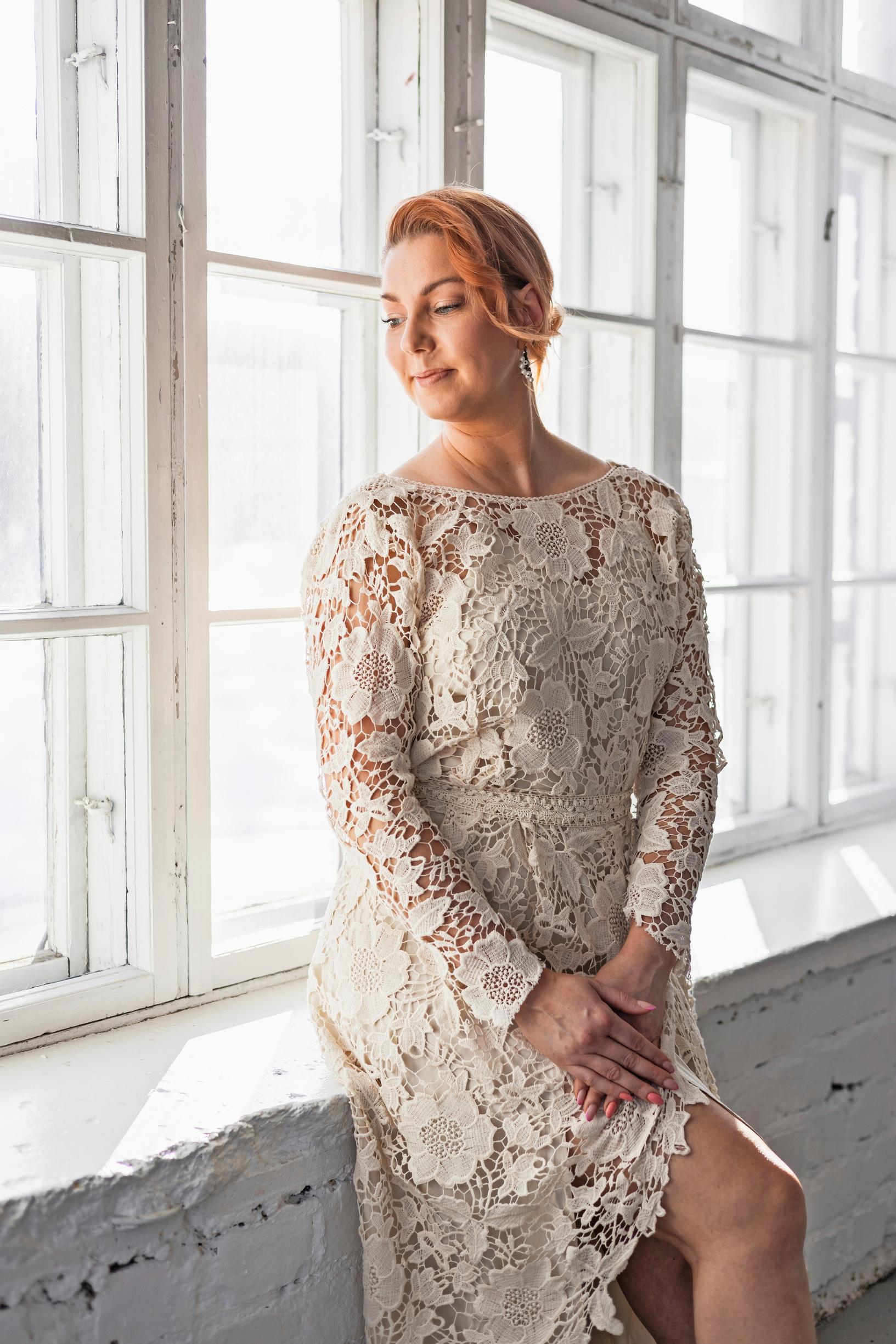

“Some bring lace that’s been passed down in the family, hoping it can be used in their gown.”
How is upcycled lace as a sewing material?
I can sense a past life in old lace. New fabric doesn’t feel the same to me. I’m moved by the idea that an old lace curtain may have witnessed life on both sides of a window for years, or that someone crocheted every loop of a lace bedspread, and now their work is reborn in my hands.
Friends and clients call me the lace whisperer. I can usually tell right away whether lace is suitable for a gown. If it’s too stiff or if time and sunlight have made it brittle, it won’t hold up. Stiff lace also unravels more easily.
Lace comes in many forms, but it’s generally full of holes and see through. Sewing seams in something that’s so open isn’t simple, because you can’t stitch over a hole without adding a separate lace edge.
When I see a piece of lace, I immediately picture how the finished dress will look and move. I mostly use lace from bedspreads and curtains. Because it’s upcycled, I’m always limited by how much material I have. The sleeves might be made from a different kind of lace, and the pieces complement each other.
I also get lace from clients. Some bring lace that’s been passed down in the family, hoping it can be used in their gown. Many people have heard I need material, so they donate it to me. I also visit thrift shops to find hidden gems.
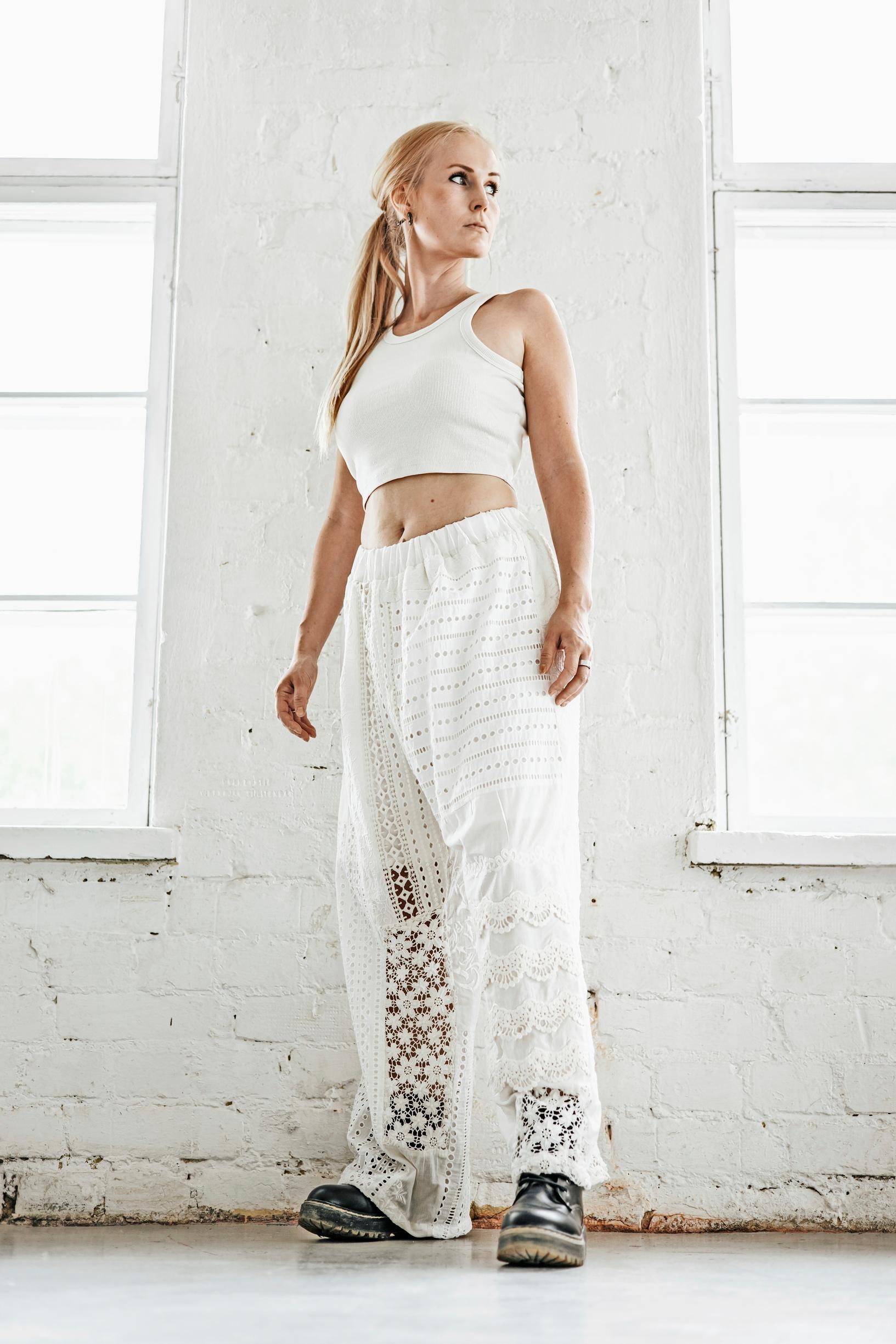
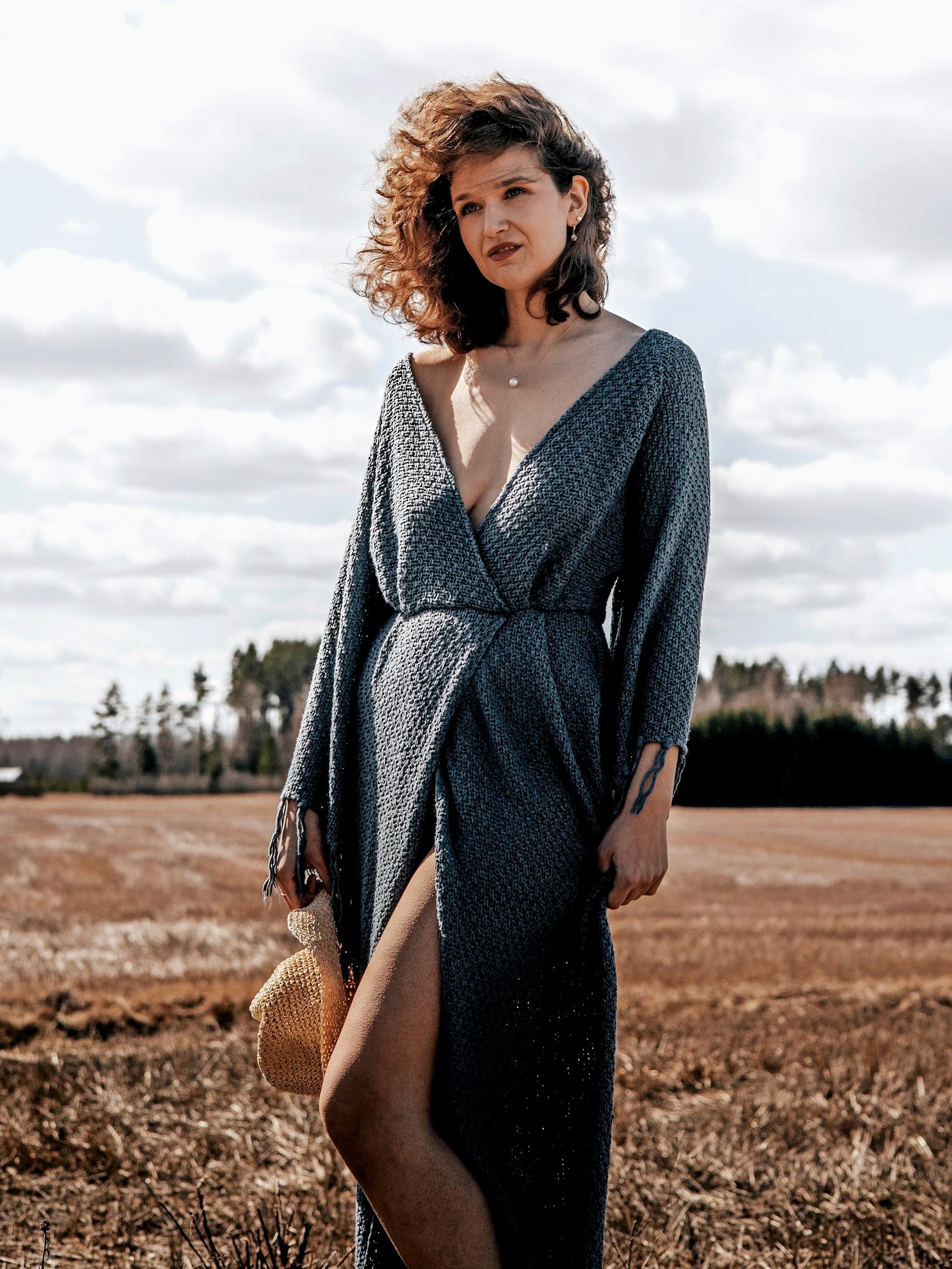
You are a third-generation seamstress. What does this profession mean to you?
It’s an honor. I never met my grandmother Aune, but my mother Anitta encouraged me to become a seamstress. We were very close; I even keep her photo on my sewing machine.
I was supposed to become a photographer, like my father, but I didn’t have the patience for the technical details. Fabric feels like it does what I want it to, and I’m happiest when I’m making something with my own hands.
My mother was very meticulous and always made sure I knew not to rush. When I lived in another town and got stuck, I would call her for advice. She might remind me, for instance, never to iron corduroy or it would show flattening marks. I had to test it for myself, and of course, she was right. I wish she could see what I’m doing now. I hope both she and my grandmother would be proud of me.
Mari’s tips for sewing old lace
- Gently stretch the lace to see if it’s still sturdy. In natural light, you can check whether it’s durable and even in color or weakened by the sun.
- Because lace is translucent, the best finish on delicate lace often comes from French seams. This hides the raw edges inside the seam, keeping both sides neat.
- Sewing lace takes practice, and mistakes are great teachers. Sew with love and rip with joy. Don’t begin by practicing on lace that has high sentimental value.


